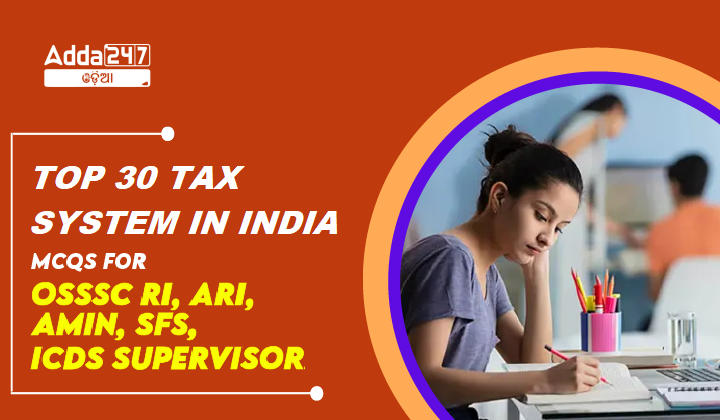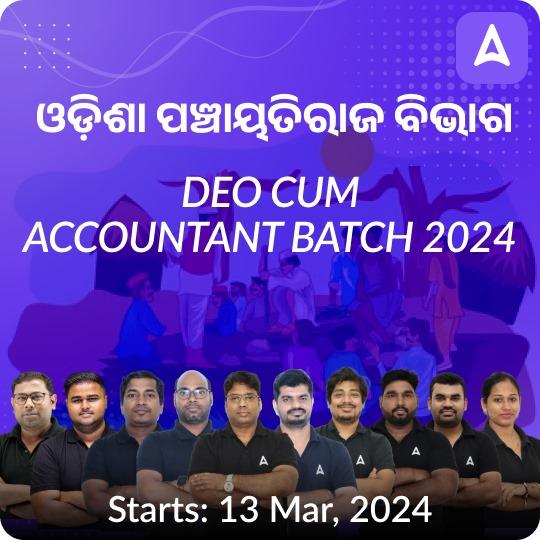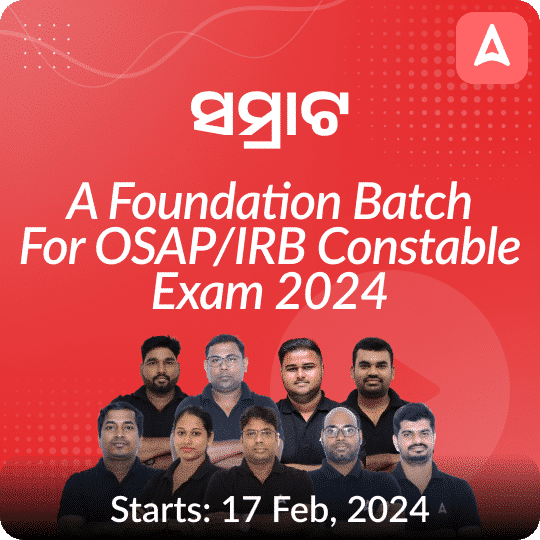The Indian tax system, a labyrinth of regulations and provisions, plays a crucial role in the nation’s economic landscape. Aspirants preparing for competitive exams such as OSSSC RI, ARI, Amin, SFS, and ICDS Supervisor must grasp the intricacies of this system. Here, we delve into the top 30 multiple-choice questions (MCQs) that encapsulate the diverse facets of India’s tax structure.
Top 30 Tax System in India MCQS For OSSSC RI,ARI, Amin, SFS, ICDS Supervisor
19. What was the purpose of introducing the Minimum Alternate Tax (MAT) in India?
-
- a) To discourage companies from making profits
- b) To ensure companies pay a fixed percentage of book profit as tax
- c) To encourage companies to maximize profits
- d) To exempt profitable companies from paying taxes
- Answer: b) To ensure companies pay a fixed percentage of book profit as tax
20. What is the current rate of Minimum Alternate Tax (MAT) in India?
-
- a) 15%
- b) 18.5%
- c) 20%
- d) 25%
- Answer: b) 18.5%
21. Who is liable to pay Alternate Minimum Tax (AMT) in India?
-
- a) Companies
- b) Limited Liability Partnerships (LLPs)
- c) Other forms of business organizations excluding companies and LLPs
- d) Individuals
- Answer: c) Other forms of business organizations excluding companies and LLPs
22. What is the proposed rate of tax for Alternate Minimum Tax (AMT) in India?
-
- a) 15%
- b) 18.5%
- c) 20%
- d) 25%
- Answer: b) 18.5%
23. What is the main objective of introducing Alternate Minimum Tax (AMT)?
-
- a) To discourage profit-linked deductions
- b) To encourage more companies to convert to LLPs
- c) To exempt certain business organizations from paying taxes
- d) To simplify the tax system for companies
- Answer: a) To discourage profit-linked deductions
24. Which form of tax is Minimum Alternate Tax (MAT)?
-
- a) Direct Tax
- b) Indirect Tax
- c) Progressive Tax
- d) Regressive Tax
- Answer: a) Direct Tax
25. Which organization deals with matters related to levying and collecting Direct Taxes in India?
-
- a) Central Board of Direct Taxes (CBDT)
- b) Reserve Bank of India (RBI)
- c) Securities and Exchange Board of India (SEBI)
- d) Goods and Services Tax Network (GSTN)
- Answer: a) Central Board of Direct Taxes (CBDT)
26. Which tax cannot be shifted to another individual or entity?
-
- a) Indirect Tax
- b) Direct Tax
- c) Progressive Tax
- d) Regressive Tax
- Answer: b) Direct Tax
27. What is the purpose of levying Fringe Benefits Tax (FBT)?
-
- a) To tax employee salaries directly
- b) To tax company profits
- c) To tax benefits provided by employers to employees
- d) To tax investments made by companies
- Answer: c) To tax benefits provided by employers to employees
28. What is the duration for which a National Emergency can be in force without parliamentary approval?
-
- a) 3 months
- b) 6 months
- c) 1 year
- d) 2 years
- Answer: b) 6 months
29. Which branch of government continues to function during a State of Emergency?
-
- a) Executive
- b) Legislative
- c) Judicial
- d) Administrative
- Answer: b) Legislative
30. Which fundamental rights cannot be suspended even during a National Emergency?
-
- a) Right to Freedom of Speech
- b) Right to Equality
- c) Right to Life and Personal Liberty
- d) Right to Property
- Answer: c) Right to Life and Personal Liberty
















